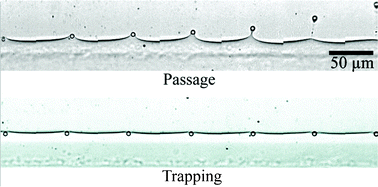 Surface tension is an important property of all liquids and influences many of their characteristics, such as droplet formation. Surface tension at the interface of two different liquids is interfacial tension. An example of this is the separation of oil and water in solution.
Surface tension is an important property of all liquids and influences many of their characteristics, such as droplet formation. Surface tension at the interface of two different liquids is interfacial tension. An example of this is the separation of oil and water in solution.
There are other solutions of dissimilar liquids that have extremely small interfacial tensions, 1000 times less than that of oil and water. Measuring this accurately by traditional techniques, such as force tensiometry methods, is a problem. Although many more methods, have been proposed to improve upon this, a simple and accurate technique is yet to be found.
Howard Stone has now led a team at Princeton University and Harvard University, USA, in producing the first microfluidic tensiometer with the capability of measuring ultralow interfacial tension. Their development uses only a small amount of reagents and magnetic particles followed by application of a mathematical model to calculate the interfacial tension.
The measurement is taken by observing the distance between the center of the magnetic particle and the flowing interface. The paramagnetic beads may pass through the interface or be trapped by it due to the balance of magnetic and interfacial forces – only when this ratio passes a threshold value do the particles pass through. The method uses these threshold values to then calculate the ultralow interfacial tension.
This simple, miniaturised tensiometer has application in many different systems, with advantages for the applications of ultralow interfacial tension including enhanced oil recovery and microemulsions.
Microfluidic ultralow interfacial tensiometry with magnetic particles
Scott S. H. Tsai, Jason S. Wexler, Jiandi Wan and Howard A. Stone
DOI: 10.1039/C2LC40797C
*Free access to individuals is provided through an RSC Publishing personal account. Registration is quick, free and simple










